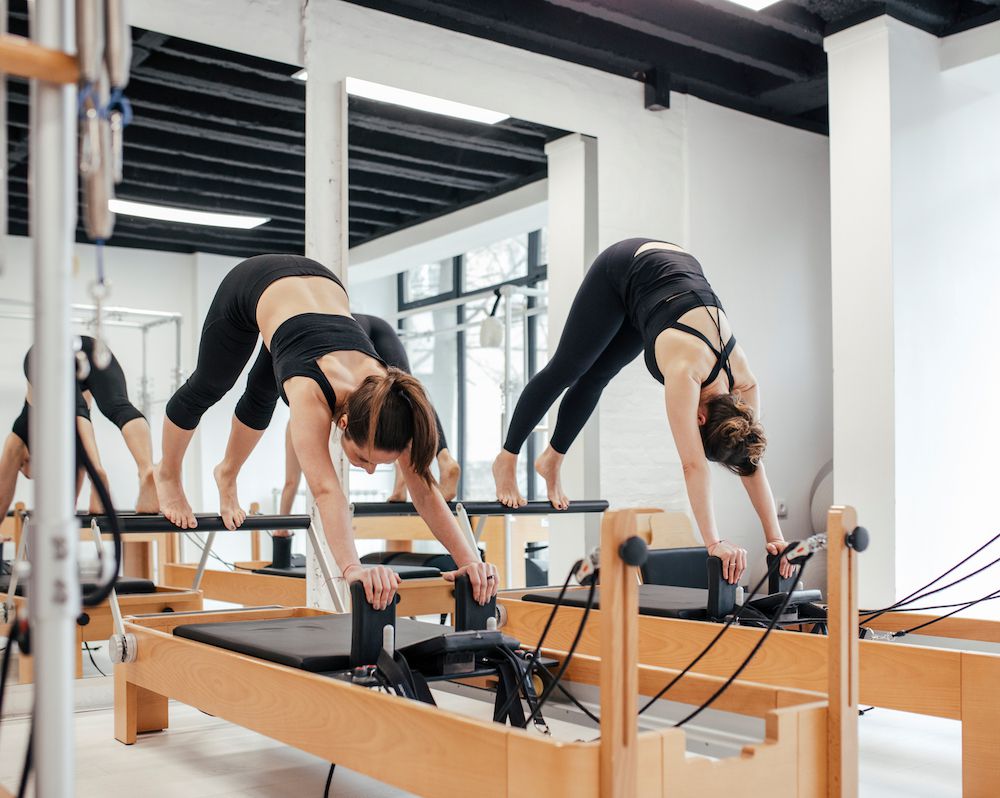The Benefits of Pilates: Achieving Optimal Health and Fitness
Welcome to our comprehensive guide on the numerous benefits of Pilates. As experts in SEO and high-end copywriting, we are dedicated to providing you with the most valuable and informative content possible. In this article, we will explore the advantages of Pilates and how it can enhance your overall well-being.
Enhanced Core Strength and Stability
Pilates is renowned for its ability to strengthen and stabilize the core muscles. By engaging the deep abdominal muscles, including the transverse abdominis, Pilates exercises promote a strong core that supports the spine and improves posture. A strong core is essential for maintaining balance and stability in everyday activities, preventing injuries, and enhancing athletic performance.
Improved Flexibility and Muscle Tone
Regular practice of Pilates can significantly improve flexibility and muscle tone throughout the body. Through a combination of stretching and strengthening exercises, Pilates targets different muscle groups, including the arms, legs, back, and abdomen. By elongating and toning the muscles, Pilates helps create a lean and sculpted physique.
Enhanced Mind-Body Connection
Pilates places great emphasis on the mind-body connection, promoting awareness and control of movement. By focusing on proper breathing techniques and precise movements, Pilates cultivates mindfulness and concentration. This mind-body connection not only enhances the effectiveness of the exercises but also carries over into daily life, promoting mental clarity and reducing stress.
Improved Posture and Alignment
Poor posture is a common issue in today’s sedentary lifestyle. Pilates can help correct postural imbalances and improve overall alignment. By strengthening the core and promoting proper spinal alignment, Pilates encourages an upright posture, reducing strain on the back and neck. Improved posture not only enhances physical appearance but also prevents musculoskeletal pain and discomfort.
Injury Prevention and Rehabilitation
Pilates is widely recognized for its rehabilitative benefits. The low-impact nature of Pilates exercises makes it suitable for individuals recovering from injuries or with physical limitations. By focusing on controlled movements and proper alignment, Pilates helps restore strength, flexibility, and mobility, aiding in the recovery process. Moreover, Pilates can also be used as a preventative measure, reducing the risk of future injuries by strengthening the body and improving balance.
Increased Energy Levels
Regular Pilates practice can boost energy levels and combat fatigue. By promoting deep breathing and circulation, Pilates increases oxygen flow to the muscles, enhancing vitality and overall well-being. The combination of physical movement, mental focus, and controlled breathing revitalizes the body and mind, leaving you feeling energized and refreshed.
Stress Reduction and Relaxation
In today’s fast-paced world, stress has become a significant concern. Pilates offers a sanctuary for relaxation and stress reduction. The mindful and controlled movements, coupled with deep breathing techniques, help calm the nervous system and promote a sense of tranquility. Regular Pilates practice can alleviate stress, improve sleep quality, and enhance overall mental well-being.

In conclusion, Pilates offers a multitude of benefits for both the body and mind. From enhanced core strength and flexibility to improved posture and injury prevention, Pilates is a comprehensive exercise method that can transform your overall health and fitness. By incorporating Pilates into your fitness routine, you can achieve optimal well-being and unlock your full potential.
Frequently Asked Questions about the Benefits of Pilates
1. What is Pilates?
Pilates is a form of exercise that focuses on strengthening the core muscles, improving flexibility, and enhancing overall body strength.
2. What are the main benefits of Pilates?
The main benefits of Pilates include improved posture, increased muscle tone, enhanced flexibility, better balance, and overall body strength.
3. Can Pilates help with weight loss?
While Pilates is not primarily a weight loss exercise, it can contribute to weight loss indirectly by improving muscle tone, increasing metabolism, and promoting overall well-being.
4. Is Pilates suitable for all fitness levels?
Yes, Pilates is suitable for people of all fitness levels. It can be modified and adapted to meet the needs of beginners as well as advanced practitioners.
5. How often should I do Pilates to see results?
For optimal results, it is recommended to practice Pilates at least 2-3 times a week. Consistency is key to experiencing the benefits of Pilates.
6. Can Pilates help with back pain?
Yes, Pilates can be beneficial for people with back pain. It helps strengthen the core muscles, improves posture, and enhances spinal alignment, which can alleviate back pain.
7. Will Pilates make me bulky?
No, Pilates focuses on creating long, lean muscles rather than bulk. It helps to sculpt and tone the body without adding excessive muscle mass.
8. Can Pilates improve sports performance?
Absolutely! Pilates can enhance sports performance by improving core strength, flexibility, balance, and coordination, which are essential for many sports activities.
9. Is Pilates only for women?
No, Pilates is suitable for both men and women. It is a versatile exercise method that offers benefits to individuals regardless of gender.
10. Can Pilates help with stress relief?
Yes, Pilates can be a great stress-relieving activity. The focus on breathing, mindfulness, and controlled movements can help calm the mind and promote relaxation.




